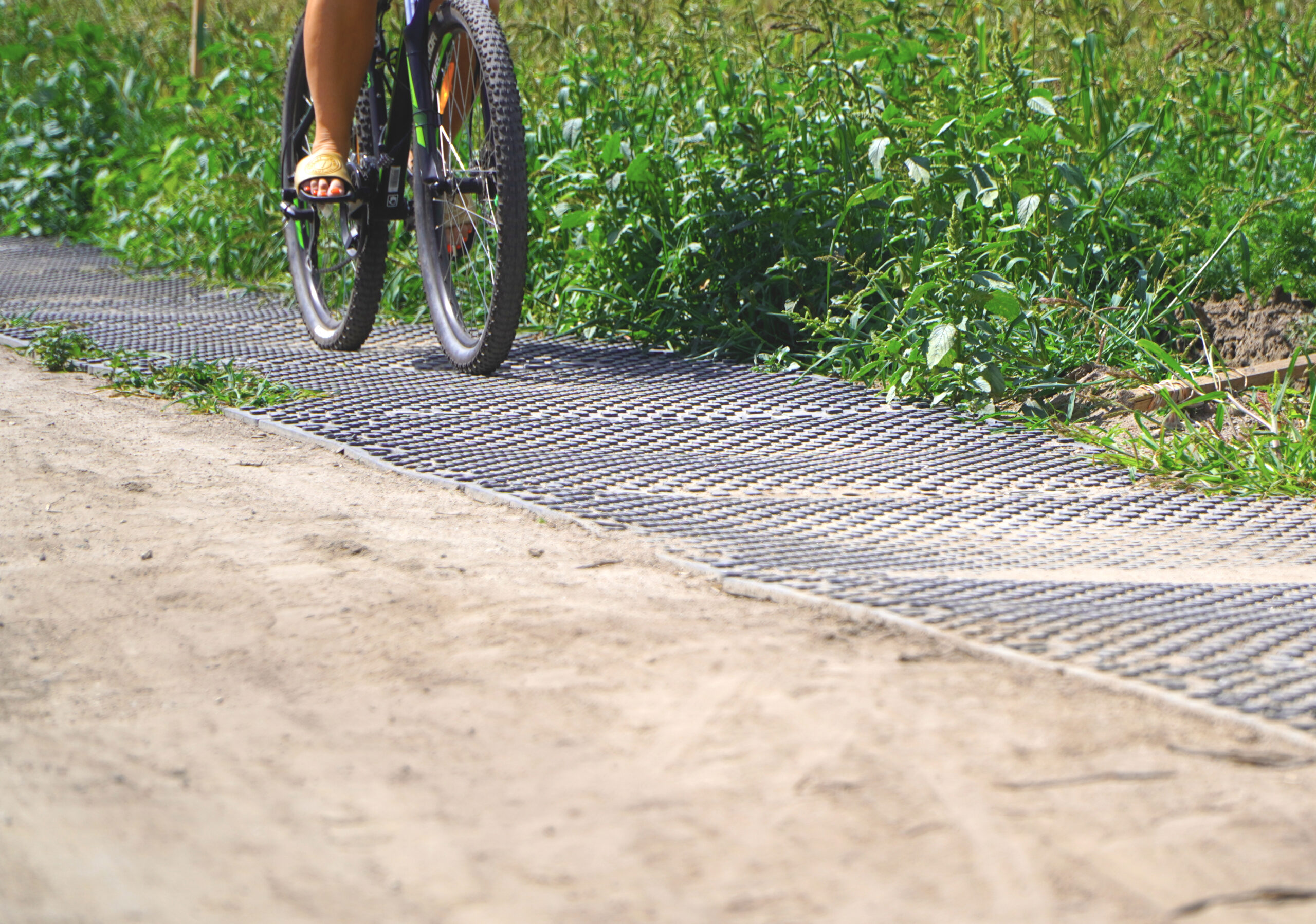Road System road plates are not only an excellent material for temporary roads, driveways or squares. They also work well wherever a temporary traffic route needs to be created.
Traffic route – example implementation

Traffic routes are some of the more common developments using Road System road plates. A good example is the preparation of just such a temporary traffic route in Kórnik. It was used during the reconstruction of one of the city’s main roads. The traffic route created in Kórnik at the time of the renovation functioned as a road for pedestrian traffic. Thus, it was used by pedestrians as well as cyclists and people participating in outdoor sports (such as scooter and rollerblading).
Traffic routes – what are they?
The definition of this concept is quite general. According to it, a thoroughfare can be called a strip of land intended for the movement of vehicles or pedestrians. Traffic routes therefore occur not only in open countryside, but also in buildings. What is a circulation line in an enclosed space? Its role is played, for example, by corridors, stairwells and escape doors.
Factory halls and storage yards also have traffic routes. What is it in this situation? These will be intersections, car parks or manoeuvring zones accessible to all employees. They too can be created using Road System road plates!
Of course, as in our earlier example, there is another type of communication route. What does this mean? This will also include a temporary road for vehicle traffic – e.g. during renovations.
Rules for designating traffic routes
The designation of traffic routes should be in accordance with generally accepted principles. In the case of temporary routes that are accessible to the public (i.e. roads laid with Road System plates, for example), their marking is less important than in the case of the designation of company routes. In a large hall, where pedestrians, mechanical equipment (e.g. forklifts) and motor vehicles move across the site, proper marking of crossings is particularly important for the safety of all users.
So what are the basic rules for marking routes? Those outside are marked like all roads, with white lines. Traffic routes inside the halls, on the other hand, are designated using the colour yellow.
Traffic routes and regulations
All the rules concerning issues such as traffic route versus road, or the width and marking of routes, are set out in the Decree of the Minister of Labour and Social Policy of 26 September 1997.
According to the principles contained in this document, what should traffic routes look like? The regulations detail, among other things, their dimensions.
Intended for a specific type of traffic, a specific traffic route should be of an appropriate width. Thus, for example, in the case of pedestrian traffic, the narrowest one-way road permitted is one with the width of the load carried by the worker +30 cm.
What about when the road under construction is intended to be a two-way thoroughfare, also intended for vehicle traffic? The width is then determined as twice the width of the load carried and an additional 200 cm is added to it.
With such rules, any traffic route – a temporary road – becomes safe, and movement along it: smooth and comfortable. In order to maximise this comfort and to be able to use the temporary road in all weather conditions (including frost and heat), it is advisable to provide a suitable surface. Laying it with Road System plates will be a great choice in such a situation!
Read also:








